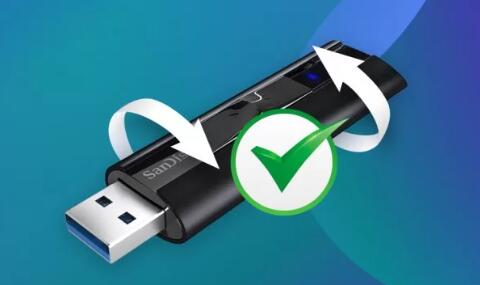Formatting a SanDisk USB drive is a straightforward process, but there are various details and considerations to ensure it’s done correctly.
USB Drive Formatting
Before diving into the steps, it’s essential to understand what formatting a USB drive does. Formatting prepares the USB drive for use by erasing all data on it and setting up a file system that the operating system can recognize.
File Systems:
FAT32: Compatible with almost all operating systems and devices but has a maximum file size limit of 4GB and a volume size limit of 2TB.
NTFS: Supports large files and volumes, offers better security features but is mainly compatible with Windows systems.

exFAT: Designed for flash drives, supports large files and volumes, and is compatible with both Windows and macOS.
Preparing to Format
Backup Data: Formatting will erase all data on the USB drive, so make sure to back up any important files before you proceed.
Check USB Drive Capacity: Ensure your USB drive has enough capacity for your needs and confirm that it is functioning correctly.
Formatting on Windows
Insert the USB Drive: Plug your SanDisk USB drive into a USB port on your computer.
Open File Explorer: Right-click the Start menu and select ‘File Explorer’ or press Win + E.
Locate the USB Drive: In File Explorer, find your USB drive under ‘This PC’ or ‘My Computer.’
Right-Click and Format: Right-click on the USB drive and select ‘Format’ from the context menu.
Choose File System:
FAT32: Suitable for smaller drives or when compatibility with various devices is needed.
NTFS: Choose this if you need to store files larger than 4GB or require enhanced security features.
exFAT: Ideal for large files and when using the drive with both Windows and macOS.
Set Allocation Unit Size: The default setting is usually fine, but you can adjust this if necessary for specific use cases.
Volume Label: Enter a name for your USB drive if desired.
Quick Format: Check the ‘Quick Format’ box if you want a faster process that doesn’t check for bad sectors. Uncheck this box for a thorough format that scans for bad sectors.
Start Formatting: Click ‘Start’ to begin the formatting process. A warning will appear indicating that all data will be erased. Confirm to proceed.
Complete: Once the format is complete, you’ll receive a notification. Click ‘OK’ to finish.
Formatting on macOS
Insert the USB Drive: Connect your SanDisk USB drive to your Mac.
Open Disk Utility: Go to Applications > Utilities > Disk Utility or search for ‘Disk Utility’ using Spotlight (Cmd + Space).
Select the USB Drive: In Disk Utility, find your USB drive in the sidebar and click on it.
Erase: Click the ‘Erase’ button at the top of the window.
Choose File System:
MS-DOS (FAT): Equivalent to FAT32. suitable for compatibility with various devices.
ExFAT: Best for large files and cross-platform use.
Mac OS Extended: Choose this if you only use the drive with macOS, though it’s not recommended for USB drives used with other operating systems.
Name the Drive: Enter a name for the USB drive in the ‘Name’ field.
Scheme: Select ‘Master Boot Record’ for compatibility with most systems.
Erase: Click ‘Erase’ to format the drive. Confirm the action if prompted.
Finish: After the process completes, you can close Disk Utility.
Formatting on Linux
Insert the USB Drive: Plug your SanDisk USB drive into your Linux machine.
Open a Terminal: You can usually find Terminal in your applications menu or by pressing Ctrl + Alt + T.
Identify the USB Drive: Run the command lsblk or fdisk -l to list all drives and partitions. Identify your USB drive by its size and partition information.
Unmount the Drive: If the drive is mounted, unmount it using sudo umount /dev/sdX1. replacing sdX1 with your actual device identifier.
Format the Drive:
For FAT32: Use sudo mkfs.vfat /dev/sdX1.
For exFAT: Ensure you have exfat-utils installed, then use sudo mkfs.exfat /dev/sdX1.
For NTFS: Install ntfs-3g if needed, then use sudo mkfs.ntfs /dev/sdX1.
Label the Drive (Optional): Use sudo e2label /dev/sdX1 NEWLABEL for ext file systems or similar commands for other file systems.
Complete: Once formatting is done, you can safely remove the USB drive.
Troubleshooting
Drive Not Recognized: Ensure the USB drive is properly connected and try different USB ports or computers. Check if the drive is visible in BIOS/UEFI settings.
Errors During Formatting: If you encounter errors, ensure no files are open from the USB drive and try using a different file system or checking the drive for physical damage.
Drive Not Formatted Correctly: Ensure you’ve selected the correct file system and that you’ve followed the steps correctly. Reformatting the drive might resolve the issue.
Formatting a SanDisk USB drive is a simple yet crucial process for maintaining data integrity and compatibility. Whether you are using Windows, macOS, or Linux, the steps outlined above will help you format your USB drive efficiently. Remember to back up your data before formatting and choose the file system that best suits your needs.
About us and this blog
Panda Assistant is built on the latest data recovery algorithms, ensuring that no file is too damaged, too lost, or too corrupted to be recovered.
Request a free quote
We believe that data recovery shouldn’t be a daunting task. That’s why we’ve designed Panda Assistant to be as easy to use as it is powerful. With a few clicks, you can initiate a scan, preview recoverable files, and restore your data all within a matter of minutes.

 Try lt Free
Try lt Free Recovery success rate of up to
Recovery success rate of up to









